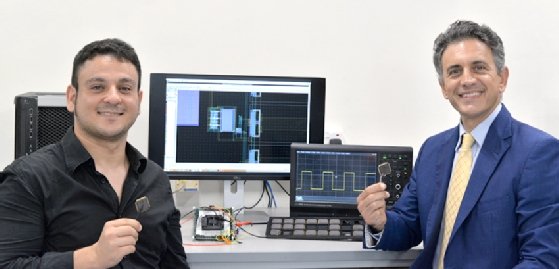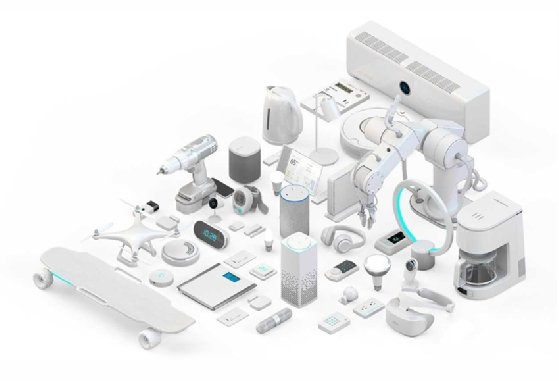
cherezoff - stock.adobe.com
Powering IoT devices: Batteries, energy harvesting or both?
Batteries may be the go-to power for IoT devices today, but energy-harvesting options are emerging and destined to play a big role in creating ultra-low power systems.
IoT deployments require the use of smart, miniaturized silicon-chip sensors that transmit data on a regular basis. Powering these oftentimes set-it-and-forget-it devices, sometimes installed in hard-to-reach or dangerous locations, is no easy feat.
Until now, batteries have been primarily viewed as a starting point for powering IoT. However, energy-harvesting technologies, which derive power from external sources such as solar, thermal, wind and vibration, have set their sights on IoT. In fact, many new IoT systems now combine batteries with energy-harvesting capabilities to take advantage of ambient energy while having the assurance of a battery backup.
So, what's the best way to power an IoT system -- energy-harvesting technology or batteries or both? As with any decision, it depends.
"The powering of IoT devices varies widely by industry," said Christian Renaud, analyst at 451 Research. "What works for factory equipment is different than for a semi-truck or agricultural sensor. It varies by industry and even sub-use case."
Energy harvesting emerges as a real-world IoT power option
So far, energy harvesting hasn't really taken off, despite its enormous potential to power IoT. There are plenty of IoT use cases in which batteries are a great choice, especially if they involve only a handful of sensors. But smart cities or large industrial installations with thousands of sensors with batteries that need to be changed often -- even every few years -- open the door to a risk of losing data.
 Christian Renaud
Christian Renaud
"In smart buildings, where there may be retrofit or brownfield applications, we're seeing energy-harvesting use cases for occupancy sensors for lighting, heating, ventilation and air conditioning to lower energy costs for the building," Renaud said.
Energy-harvesting technologies have come a long way in the past 10 years. Early installations for building energy management systems -- for example, turning lights off and rerouting airflow from areas no one is using -- were efficient and saved money, but really only made sense for buildings in excess of 55,000 square feet.
"The installation costs early on were unreasonable for many players, so we decided to reduce the installation part and simplify it, which opens up a larger section of that market," said Christian Pennisi, director of operations at Jennova, a provider of energy-harvesting technologies.
Energy harvesting offers the reliability of hardwiring, but with the versatility of simplified installation you get from a battery. "We recommend an integrated backup battery with the energy harvester so that you're able to keep that battery above 70% capacity, and it can provide power if needed," Pennisi said. "We view it as a fusion between energy harvesting and battery storage -- instead of being one or the other."
Jennova offers a power management circuit designed to work with any energy-harvesting transducer. "You have your transducer, which depends on how you want to harvest energy -- piezoelectric, thermoelectric, turboelectric, vibration, photovoltaic or whatever it might be -- and this one circuit board takes the input and converts it into usable power, amplifies the voltage and makes sure you're getting good DC out," Pennisi explained. "It also has an integrated battery management chip that's intelligent enough to help keep the battery recharged to power the device directly when enough energy harvesting isn't available."
While Jennova is currently still doing R&D into other types of energy harvesting, the company's moving toward what it expects to be the "big three" energy-harvesting platforms: photovoltaic, ambient wireless energy and vibration. "These will probably be the winners, because we can get the costs down to a point that the market will bear," Pennisi said, adding that "they'll also be the least intrusive installations."
Enterprises are finally seeing the value of energy harvesting, so they're starting to take action. "Instead of being hype, people are understanding the benefits and asking if there's a solution that might work for them," Pennisi said. "Companies are more likely to engage in finding those solutions now."
Don't count batteries out just yet
While energy-harvesting is making inroads in IoT, many companies are taking the IoT power challenge into their own hands, lowering the power consumption of their devices to alleviate demands placed on batteries. Key areas of design affecting power consumption are connectivity and range.
For example, the more remote the deployment, the longer the battery life needs to be to remove the requirement for frequent replacements. Every truck roll means lost margins and a longer ROI curve, according to Renaud. "This is helping drive interest in low-power wide area networking, such as LoRa and [Narrowband-IoT], because traditional cellular connections would blow through even larger batteries within days or weeks," he explained.
In short, connectivity drives power requirements.
The future of powering IoT sensors and devices
In the R&D realm, a myriad of energy-harvesting scenarios for powering IoT sensors and devices are emerging, as well as systems to reduce power usage.
One example of the future direction powering IoT might take comes from the work of a group of researchers at MIT to develop a fully flexible device that converts energy from Wi-Fi signals into electricity.
"We've come up with a new way to power the electronics systems of the future -- by harvesting Wi-Fi energy in a way that's easily integrated in large areas -- to bring intelligence to every object around us," said Tomás Palacios, a professor in the department of electrical engineering and computer science at MIT.
The group created a "rectenna" -- a device that converts AC electromagnetic waves into DC electricity -- which uses a flexible radio frequency antenna to capture electromagnetic waves -- including those carrying Wi-Fi -- as AC waveforms. The antenna is then connected to a device made out of a two-dimensional semiconductor that's just a few atoms thick. An AC signal goes into the semiconductor, which converts it into a DC voltage that can be used to power electronic circuits or recharge batteries.
This battery-free device passively captures and transforms ubiquitous Wi-Fi signals into useful DC power, and since the device is flexible, it can be fabricated in a roll-to-roll process to cover very large areas.
In experiments, the group's rectenna produced about 40 microwatts of power when exposed to the typical power level of Wi-Fi, which is around 150 microwatts -- more than enough power to light up an LED or drive silicon chips.
Another glimpse of the path powering IoT devices might take, thanks to researchers at the National University of Singapore (NUS), is a picowatt-power wake-up timer that cuts minimum power consumption of IoT sensor nodes by 1,000 times.
This inexpensive "battery-less" wake-up timer is an on-chip circuit that has demonstrated power consumption down to true picowatt range -- 1 billion times lower than a smartwatch.
The wake-up timer "doesn't need any additional circuitry, as opposed to conventional technologies, which require peripheral circuits that consume at least 1,000 times more power -- for example, voltage regulators," said Massimo Alioto, an associate professor in the department of electrical and computer engineering at NUS. "This is a step toward accelerating the development of IoT infrastructure and paves the way for the aggressive miniaturization of IoT devices for long-lasting operations."
The NUS invention reduces the power consumption of wake-up timers embedded in IoT sensor nodes. "Under typical office lighting, our novel wake-up timer can be powered by a very small on-chip solar cell that has a diameter similar to that of a strand of human hair. It can also be sustained by millimeter-scale battery for decades," Alioto said.
These are just two quick, recent examples of the amazing work being done by researchers around the globe to help make it easier to power the future of IoT.

"If you can get low-power wide area connectivity to Iowa or West Texas, then you don't necessarily need to drag power out there and can put battery replacement on the duty roster for the technician that goes out to service the tank, pump and agricultural sensor," Renaud said.
It's a formula of how long you need the device to remain powered to avoid frequent truck rolls, he added, which in itself is a function of the amount of connectivity, traffic and data at particular frequencies. So, small updates infrequently using a low-power network can exist on smaller batteries. One example of such a deployment is the LoRa agricultural sensors widely deployed across France by mobile operator Orange, he added.
Connectivity and range aren't the only things that affect power consumption. Consumers don't tend to think about how a bunch of devices will work together, they just assume they'll work, said Matt Maupin, senior product manager of wireless embedded systems at Silicon Labs, which offers a portfolio of technology to cut Wi-Fi power consumption in half for battery-powered IoT devices.

"There are many technical challenges to get multiple radios to operate simultaneously within a small device, just from a physics standpoint," he said, which includes antenna separation between these devices. "To put it in layperson terms: Output power is how loud you talk, while sensitivity is how well you hear. There's something called 'blocking performance,' and that's if I'm talking to you in a bar or something, the blocking is your ability to filter everything out and hear me," he said.
Maupin added that Silicon Labs believes radio performance is the critical factor for low power. "The better the radio performs, the more reliable it's going to be and less it will need to do retransmits, which draws more power," he said.
But there are numerous tradeoffs in power, communications and range. These are also things that Silicon Labs focuses on when it works on low-power design.
"We also deal with 'unmanaged coexistence,' which involves all of these radios within close proximity," Maupin said. "It's really the ability of our radio to push out the other signals it doesn't want, like Wi-Fi, and to only hear, say, the Zigbee signal. We've made tradeoffs in our design in terms of power to do this. Everything has Wi-Fi around it now, so we needed to do it."
Title 20
One recent factor driving ultra-low power requirements is Title 20, a standard adopted by the California Energy Commission in an update to the state's Appliance Efficiency Regulations. It goes into effect on July 1, 2019, and mandates any company selling lighting appliances, including LED bulbs, meet certain standards.
"It's specifically targeted at the connected side called 'standby power' or 'vampire power,' and essentially states that if the LED lamp is off but connected to the network in standby mode, it can only draw 0.2 watts average for the entire life of the bulb," Silicon Labs' Maupin said.
Even if a connected lightbulb is off, technically the radio is still on, connected to the internet and drawing power. "Low power is important for line-powered devices, because when you connect all of them, you don't want to draw a lot of power when they're not actively working," Maupin noted.
Essentially, he said, Title 20 is challenging the industry to design IoT systems that consume far less power.
One of Silicon Labs' devices, for example, has a combination of output power and sensitivity that's about 123 decibel-milliwatts (dBm). "Compared to the closest competitor, which is about 110 dBm, we're 13 dBms better," Maupin said. "We have two times the range. This means is that we're going to get more reliable communications, less retries and overall lower network traffic and power consumption."
Another thing designers need to consider is measuring the need for a strong range with the need for battery life. "Designers can choose the right solution that's going to give them the best overall performance based on the power consumption that meets their needs," Maupin added.






